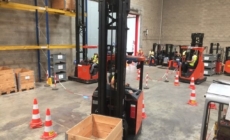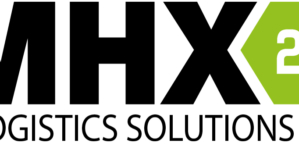-
BLACKOUT TECHNOLOGIES TARGETS SMARTPHONE DISTRACTION BEHIND THE WHEEL TO BOOST FLEET AND DRIVER SAFETY - 5 hours ago
-
NATUREWALL ANNOUNCES NEW PARTNERSHIP WITH ARROWXL - 6 hours ago
-
Trained fork truck operators lift safety standards and lower business costs - 7 hours ago
-
Tower Launches Customer Sustainability Hub with Practical Tools for Lower-Impact Pharmaceutical Cold Chain - October 16, 2024
-
Six decision-making models for best practice WMS digital transformation - October 16, 2024
-
“Transforming Logistics: Precision and Purpose” – BIFA takes centre stage - October 15, 2024
-
JAMES JONES & SONS LTD EXPANDS ITS PALLETS & PACKAGING DIVISION THROUGH THE ACQUISITION OF HG TIMBER LTD - October 10, 2024
-
HUGO BECK EXPANDS MACHINE RANGE FOR E-COMMERCE, MAIL ORDER AND LOGISTICS - October 10, 2024
-
Winning Irish Exporter of the Year, Combilifts CEO Martin McVicar talks about the journey into the Global Market - October 8, 2024
-
JAMES JONES & SONS’ AUSTRALIAN SUBSIDIARY, HYNE GROUP, EXPANDS TO WESTERN AUSTRALIA - October 3, 2024
Dawn of the Predictive Logistics Era
Demand for real-time data visibility is poised to rocket
Change is happening in the logistics industry. Shippers are under enormous pressure from customers to provide accurate real-time visibility data on shipments from pick-up to delivery. Armed with live logistics data, smart factories can plan just-in-sequence supply chains, warehouses can improve productivity by up to 30%, and retailers will be able to better provision supermarket shelves. Every sector of the business spectrum in the coming smart, live data era will profit.
In the past, shipping logistics from A to B was all about pen-and-ink planning with dispatchers reliant upon a set of well-trodden trade routes. Now the logistics industry is beginning to get smart.
Last month, a survey published by Transporeon showed that more than one third of European shippers already regard end-to-end data visibility and the ability to track and trace transports as central to their operations.
Optimizing Shipments
According to consultancy firm Bain & Company, shippers with optimized distribution networks can expect up to ten per cent increases in margins. However, the majority of businesses still think of their supply chains as costs rather than as tools to drive added value and increase efficiency. The cost mindset has to change. By moving goods in an optimized way – improving route and shipment efficiency – manufacturing plants can decrease high levels of inventories while improving operational efficiency.
Three issues still need to be addressed: reducing shadow IT and information silos, breaking free from “old school” planning, and ditching the spreadsheet.
Of these issues, perhaps the most important is ditching the spreadsheet. Not only do logistics planners contribute to information silos by producing plans in Excel, they also counteract the mindset of open, transparent workflows so crucial to success in the modern supply chain. Indeed, this type of workflow is emblematic of the organizational structures that result in shadow IT and silo decision-making, both of which make a forward-facing and future-oriented supply chain virtually impossible. Under these conditions, businesses get caught up in a cycle of planning based on past events instead of future predictable events, and then scramble to react to unforeseen breakdowns.
Predictive Logistics Era
Smart logistics is beginning to shape a more advanced conception of the logistics value stream with predictive delivery platforms being integrated into traffic management systems. It marks the dawn of the “predictive logistics era” where supply chain management and smart technology predicts delays of shipments in transit ahead of time, enabling planners, even autonomous machine processes, to adjust production schedules to meet changes in delivery schedules.
As predictive shipments accelerate, the global value chain will become more complex, relying on advanced predictive algorithms and the integration of more and more connected elements. The supply chain will become smarter and leaner, offering a more adaptive and agile environment.
The predictive logistics era will allow more data to be circulated more quickly over networks. It will be indispensable for helping to propel autonomous vehicles, large-scale Internet of Things (IoT) and drones. Other logistics-specific applications such as fleet management and predictive maintenance will benefit and drive greater efficiencies in the supply chain.
In the predictive logistics era, parcels in trailers will be embedded with their own sensor tracking data such as humidity and temperature. Shippers will then be able to implement infrastructure monitoring, process automation, smart metering and real-time fleet management.
Large carriers and freight forwarders will be the first to benefit from logistics predictive technologies allowing them to track assets in real time, make informed decisions by detailed data streams and to better engage with customers.
Sixfold’s predictive logistics platform is already beginning to transform Europe’s supply chains as customers enter the smart shipments era and transform their business economics in the process. It also enables shippers to better engage with their customers and become more customer-centric.
About Sixfold
Sixfold is one of Europe’s leading real-time logistics visibility platforms for the supply chain. Shippers and carriers seamlessly integrate their transport management systems with the Sixfold visibility platform to know where their shipments are and when they will arrive with minimal manual work from either of the parties. The platform aggregates data from all telematics systems into one data stream giving true end-to-end visibility of shipments. The Sixfold platform has powerful AI capabilities and singularly predicts delays and provides proactive alerts on any shipment delays. Up to Euros 500 million of goods are monitored by Europe’s supply chains each day using the Sixfold platform enabling customers and shippers to gain business advantage and to better plan operations. Sixfold supports customers in more than 25 European languages and data distributed on its platform is totally secure and GDPR compliant. Visit www.sixfold.com























